What is Koundinyasana 1?
Koundinyasana 1, also known as Sage Koundinya's Pose I, is an advanced arm balance in yoga that builds strength, stability, and focus. This pose is a twist-based arm balance where the body is lifted off the ground with both legs extended, one to the side and the other straight behind. It requires deep core strength, flexibility in the hips and hamstrings, and powerful arm engagement to hold the pose steadily. Practicing Koundinyasana 1 enhances overall body coordination, improves balance, and deepens focus, offering both physical and mental benefits as it tests resilience and concentration. This asana is often approached progressively, following warm-up poses like twists and hamstring stretches.
Position type: Arm strength and balance
Posture type: Balancing
Ideal for: Strength
Targets: Arms and shoulders
Pose level: Advanced
How to Prepare for Koundinyasana 1?
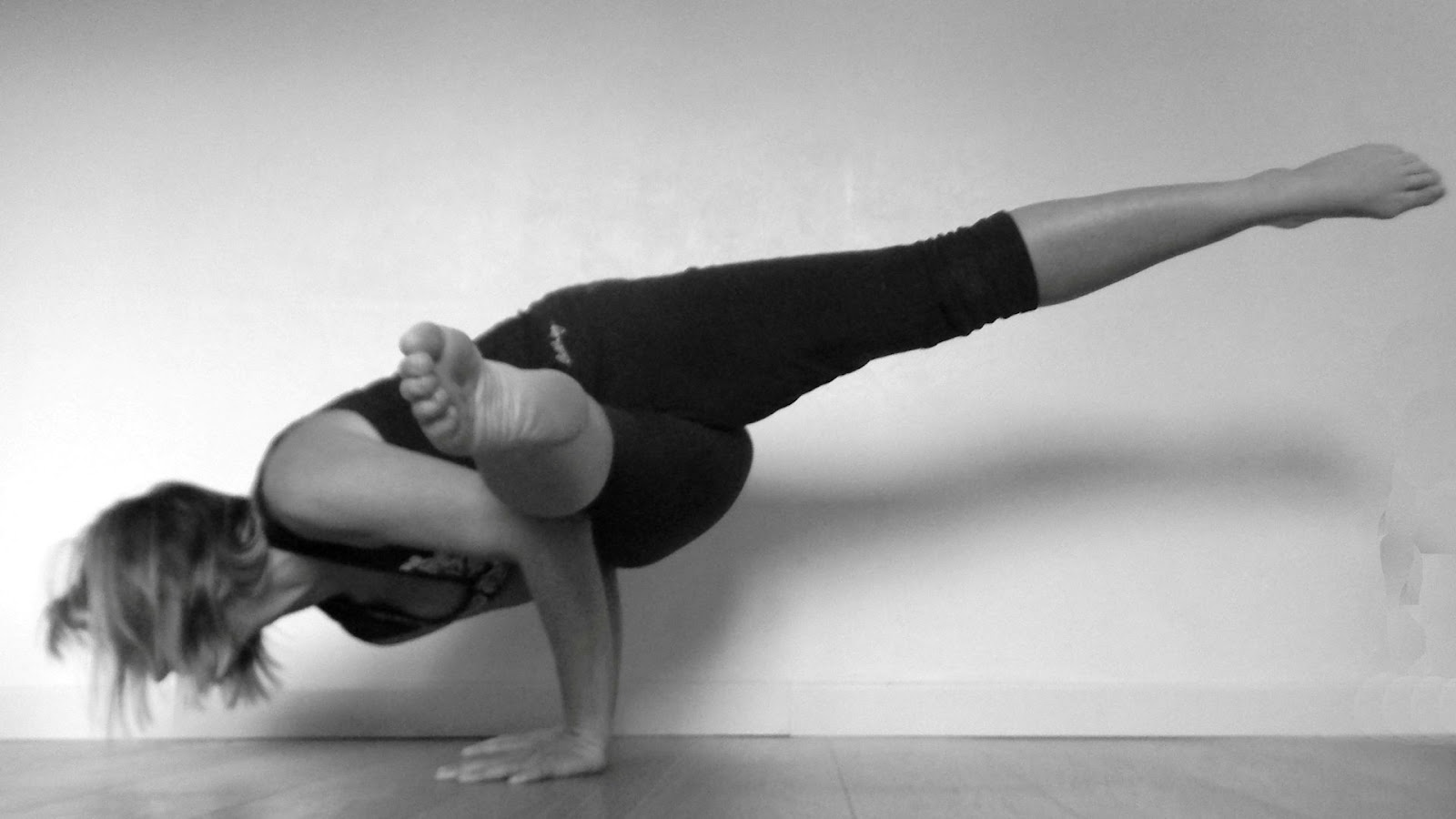
As an advanced posture, Koundinyasana 1 takes time and effort to achieve. Regularly improving strength and balance can help you achieve the pose.
- Hip Opening: Flexibility in the hips is essential for Koundinyasana 1. Practice hip-opening poses like Pigeon Pose (Kapotasana), Lizard Pose (Utthan Pristhasana), and Garland Pose (Malasana) to increase mobility and release tension.
- Twisting Poses: Since Koundinyasana 1 involves a twist, incorporate twisting postures like Revolved Triangle Pose (Parivrtta Trikonasana), Revolved Chair Pose (Parivrtta Utkatasana), and Revolved Low Lunge (Parivrtta Anjaneyasana) to prepare the spine and torso.
- Arm and Core Strength: Build upper body and core strength with Plank Pose, Chaturanga Dandasana, and Crow Pose (Bakasana). These will help you develop the power needed for supporting your body in the arm balance. You can also practice wrist strengthening exercises to help you hold weight on the palms.
- Balance and Coordination: Improve balance with standing poses like Warrior III (Virabhadrasana III), Eagle Pose (Garudasana), and Half Moon Pose (Ardha Chandrasana), which will enhance stability and focus for arm balances like Koundinyasana 1. For arm balance, practice Crow Pose, Eight-angle pose and Bhujapidasana.
How to do Koundinyasana 1? Getting into the posture:
- Begin in a squatting position and place your hands on the floor shoulder-width apart. Twist your torso to one side and bring your outer thigh to rest on the opposite arm, preparing for Side Crow. Engage your core and lift your legs off the floor.
- From Side Crow, begin to extend the top leg straight out to the side, parallel to the ground. Simultaneously, extend the bottom leg behind you, keeping it straight and engaged.
- Shift your weight onto your arms, ensuring your elbows are slightly bent and stacked over your wrists. Distribute the weight evenly between your hands.
- Engage your core muscles and focus on maintaining stability. Keep your gaze forward to help with balance. Hold the pose for a few breaths.
Getting out of the posture:
- To come out of the pose, slowly lower your legs back to the ground and return to a seated or squatting position.
- Relax in Dandasana or Sukhasana for a few minutes.
Key Alignments for Koundinyasana 1
- Keep your elbows directly over your wrists to create a strong foundation for balance and support, distributing weight evenly.
- Activate your core to stabilize your body and support the spine. A strong core prevents sagging in the lower back and helps maintain balance as you extend the legs in opposite directions.
- Ensure both legs are fully extended - one to the side and the other behind you - with your feet actively flexed, to help maintain alignment and balance.
What are the Benefits of Koundinyasana 1? Koundinyasana 1 strengthens the core, arms, and shoulders, promoting overall upper body strength and stability. Engaging the core muscles improves balance and coordination, essential for mastering more challenging poses. The twisting aspect of Koundinyasana 1 aids in detoxification by stimulating abdominal organs and improving digestion. Additionally, practicing this pose cultivates focus and concentration, helping to sharpen mental clarity. As you work on this asana, you also develop perseverance and confidence, encouraging personal growth and resilience on and off the mat. Overall, Koundinyasana 1 serves as an empowering pose that enhances both physical capabilities and mental fortitude.What are the Contraindications of Koundinyasana 1? Koundinyasana 1 is a challenging pose that may not be suitable for everyone. Those with wrist injuries or chronic wrist pain should avoid this pose, as the weight bearing on the hands can cause discomfort. Individuals with shoulder injuries or instability should also avoid practicing Koundinyasana 1, as it places significant strain on the shoulder joints. Anyone with lower back issues or hernias should be cautious, as the pose can increase pressure on the lower back. It's essential for practitioners to listen to their bodies and practice only with a qualified yoga instructor. What are the Counter Poses of Koundinyasana 1? Practice Child’s Pose or the Staff Pose for a few minutes after doing Koundinyasana 1. You can also relax in Sukhasana, the Easy pose.
Variations of Koundinyasana 1
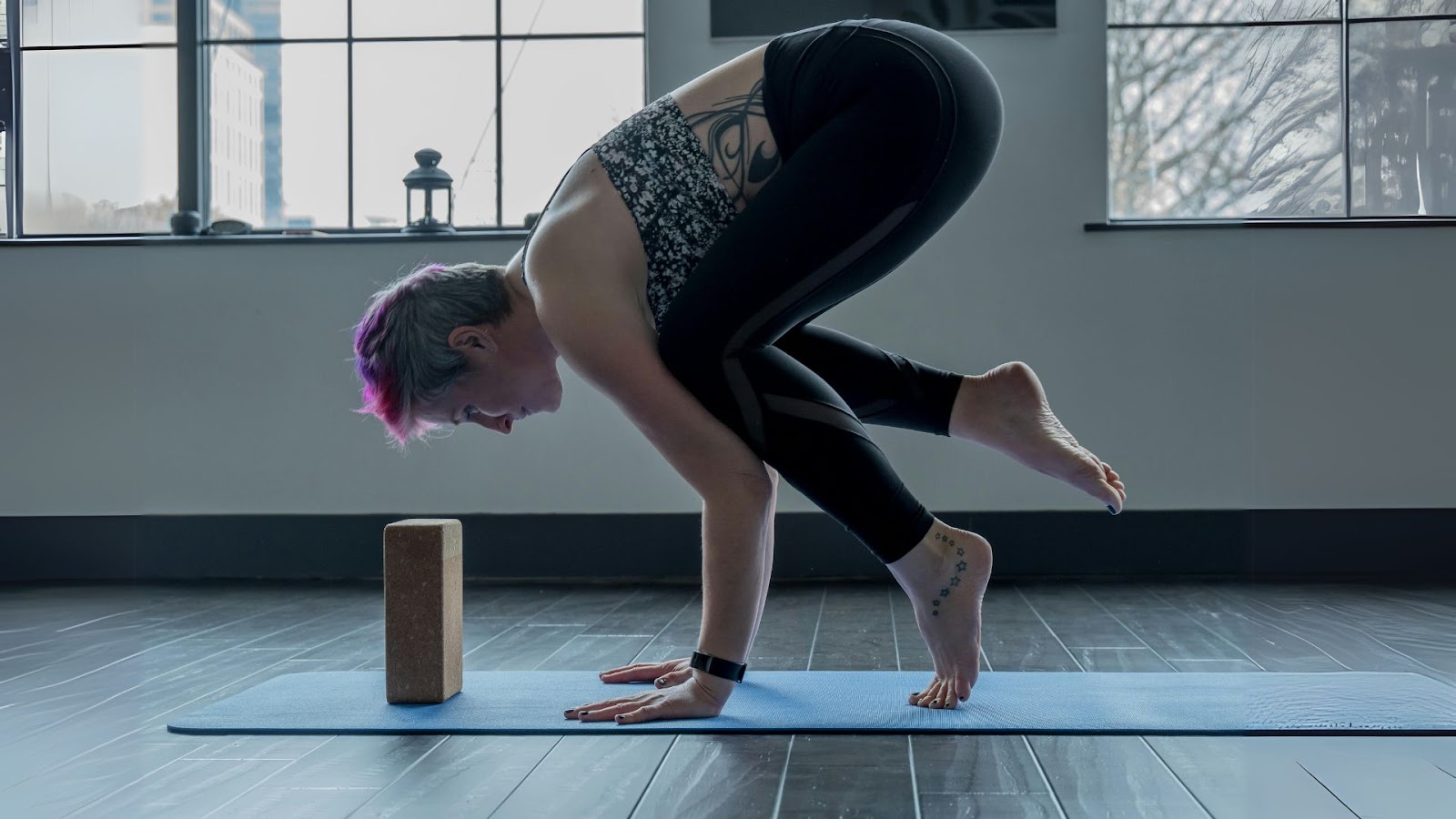
Easy Variation:
- Half Koundinyasana: Begin in a low lunge with your back knee on the ground. Place your hands on the floor, shoulder-width apart, and twist your torso toward the front knee. Instead of fully extending the legs, keep the back knee on the ground and practice lifting the front leg out to the side, keeping your hips low. This variation helps you build strength and flexibility without the full weight of the body on the arms.
- Koundinyasana with a Block: Use a yoga block under your hands to elevate the floor, making it easier to balance. Start in a squatting position and place one thigh against the opposite arm. This elevation allows for a more accessible arm balance as you work on extending your legs to the side and behind.
Advanced Variation:
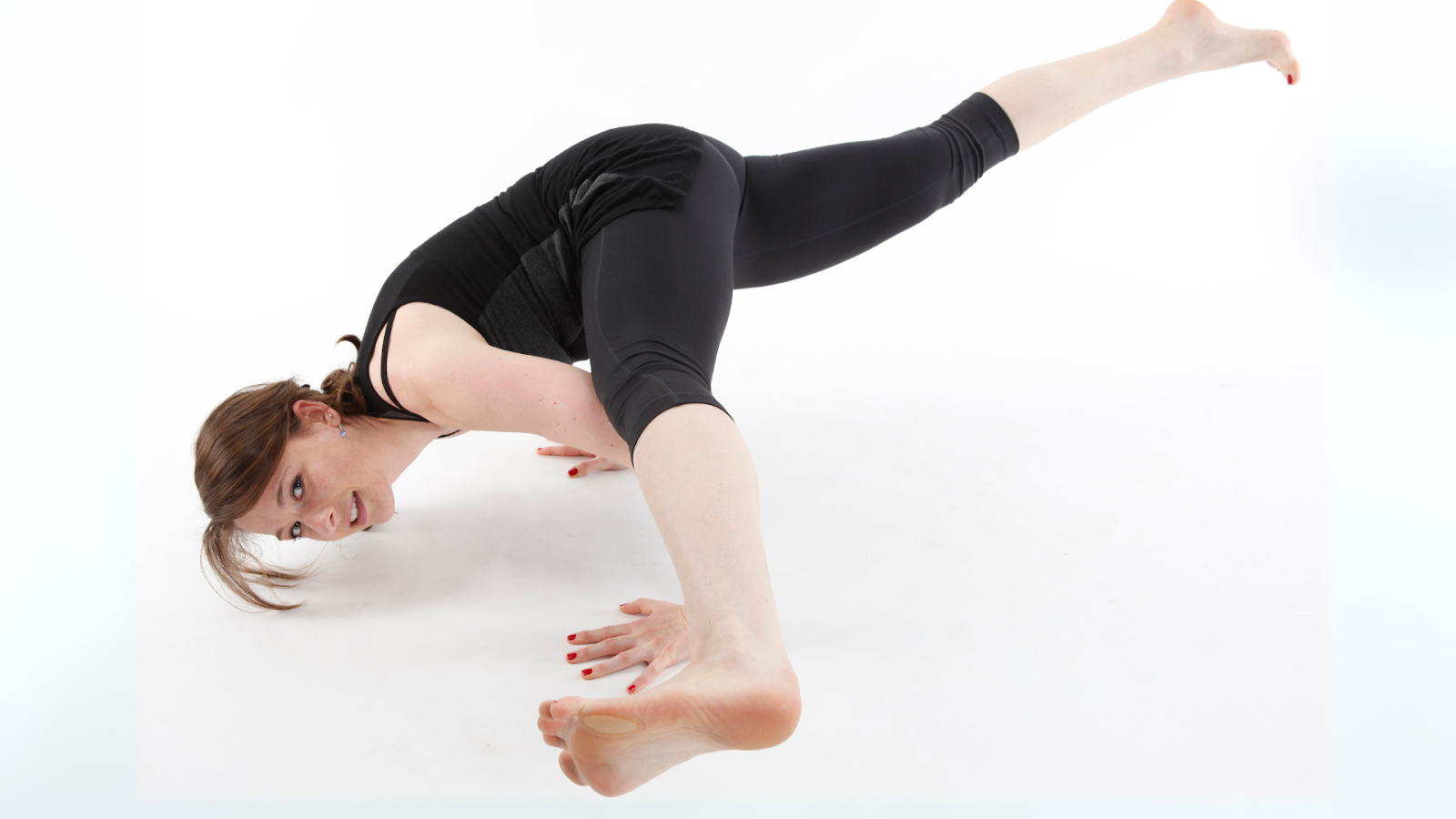
- Koundinyasana 1 with Leg Lift: In this advanced variation, after establishing the pose, lift the extended leg (the one reaching out to the side) higher, creating more demand for balance and core engagement. This increases the intensity of the pose and challenges your strength and stability.
- Koundinyasana 1 to Handstand: From Koundinyasana 1, transition into a handstand by using the strength in your arms and core to push off the ground. This dynamic movement combines the strength and balance required in both Koundinyasana 1 and handstand, making it an exciting and challenging progression for advanced practitioners. This is a very advanced transition and should only be practiced under the guidance of an experienced teacher.
Advice for Beginners For beginners attempting Koundinyasana 1, it’s essential to start with a solid foundation of strength and flexibility. Start with hip opening, twisting, and arm strengthening exercises and take your time building core stability to help you balance better. Use props like blocks if needed to make the pose more accessible. Finally, don’t rush the process; practice patience and consistency, allowing your body to gradually build the strength and confidence required for this advanced arm balance.
Shvasa Tips for Koundinyasana 1:
- Actively engage your core muscles throughout the pose to maintain stability and prevent sagging in the lower back.
- Slightly bend your elbows to create a stable base and distribute your weight evenly across your arms. This alignment helps you find balance and reduces strain on your wrists.
- Maintain steady, deep breaths while in the pose. This will help you stay calm and centered, improving your focus and overall stability as you hold the balance.
Learn how to practice Koundinyasana 1 as well as preparatory poses that work towards improving arm, shoulder and core strength LIVE on Shvasa. Meta Description: Learn how to practice Koundinyasana 1 with steps, benefits, contraindications and modifications. Summary: Koundinyasana 1 is an advanced arm balance in yoga that builds strength, stability, and focus, offering both physical and mental benefits as it tests resilience and concentration.
FAQs:
- What is Koundinyasana 1?
Koundinyasana 1, also known as Sage Koundinya's Pose I, is an advanced arm balance in yoga that builds strength, stability, and focus. This pose is a twist-based arm balance where the body is lifted off the ground with both legs extended, one to the side and the other behind. It requires deep core strength, flexibility in the hips and hamstrings, and powerful arm engagement to hold the pose steadily.
- What are the Benefits of Koundinyasana 1?
Koundinyasana 1 strengthens the core, arms, and shoulders, promoting overall upper body strength and stability. Engaging the core muscles improves balance and coordination, essential for mastering more challenging poses. The twisting aspect of Koundinyasana 1 aids in detoxification by stimulating abdominal organs and improving digestion.
- What are the Contraindications of Koundinyasana 1?
Koundinyasana 1 is a challenging pose that may not be suitable for everyone. Those with wrist injuries or chronic wrist pain should avoid this pose, as the weight bearing on the hands can cause discomfort. Individuals with shoulder injuries or instability should also refrain from practicing Koundinyasana 1, as it places significant strain on the shoulder joints
- How to do Koundinyasana 1?
- Begin in a squatting position and place your hands on the floor shoulder-width apart. Twist your torso to one side and bring your outer thigh to rest on the opposite arm, preparing for Side Crow. Engage your core and lift your legs off the floor.
- From Side Crow, begin to extend the top leg straight out to the side, parallel to the ground. Simultaneously, extend the bottom leg behind you, keeping it straight and engaged.
- Shift your weight onto your arms, ensuring your elbows are slightly bent and stacked over your wrists. Distribute the weight evenly between your hands.
- Engage your core muscles and focus on maintaining stability. Keep your gaze forward to help with balance. Hold the pose for a few breaths.











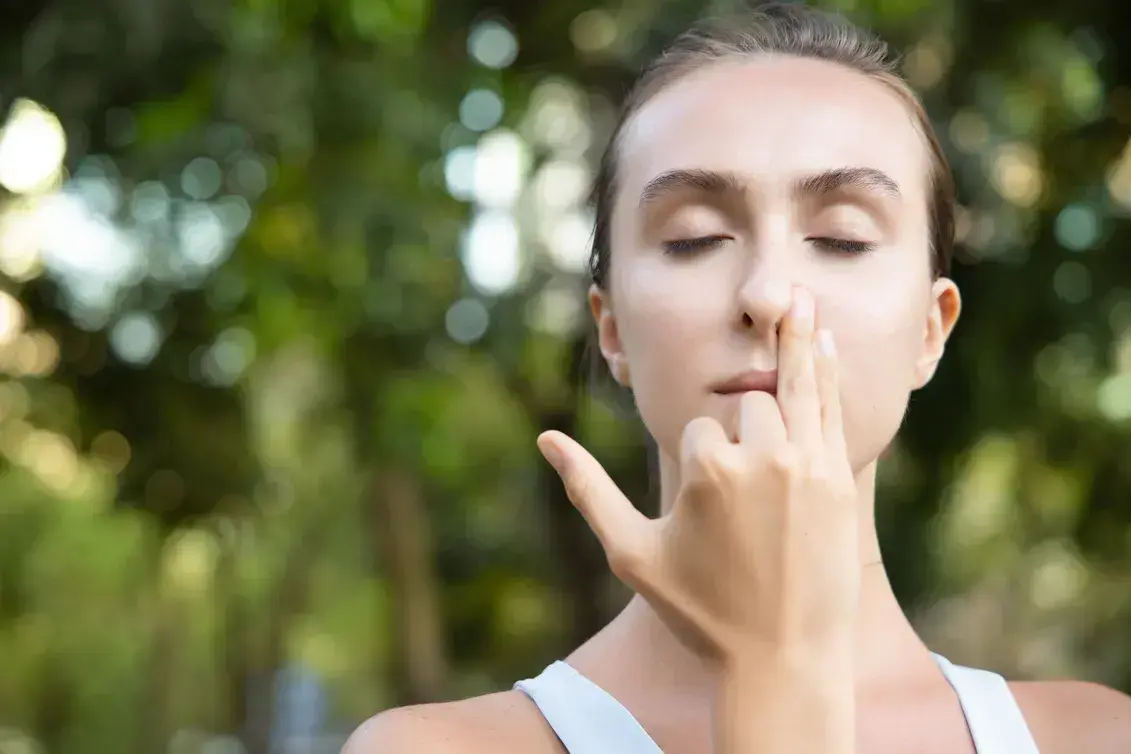



.jpg)
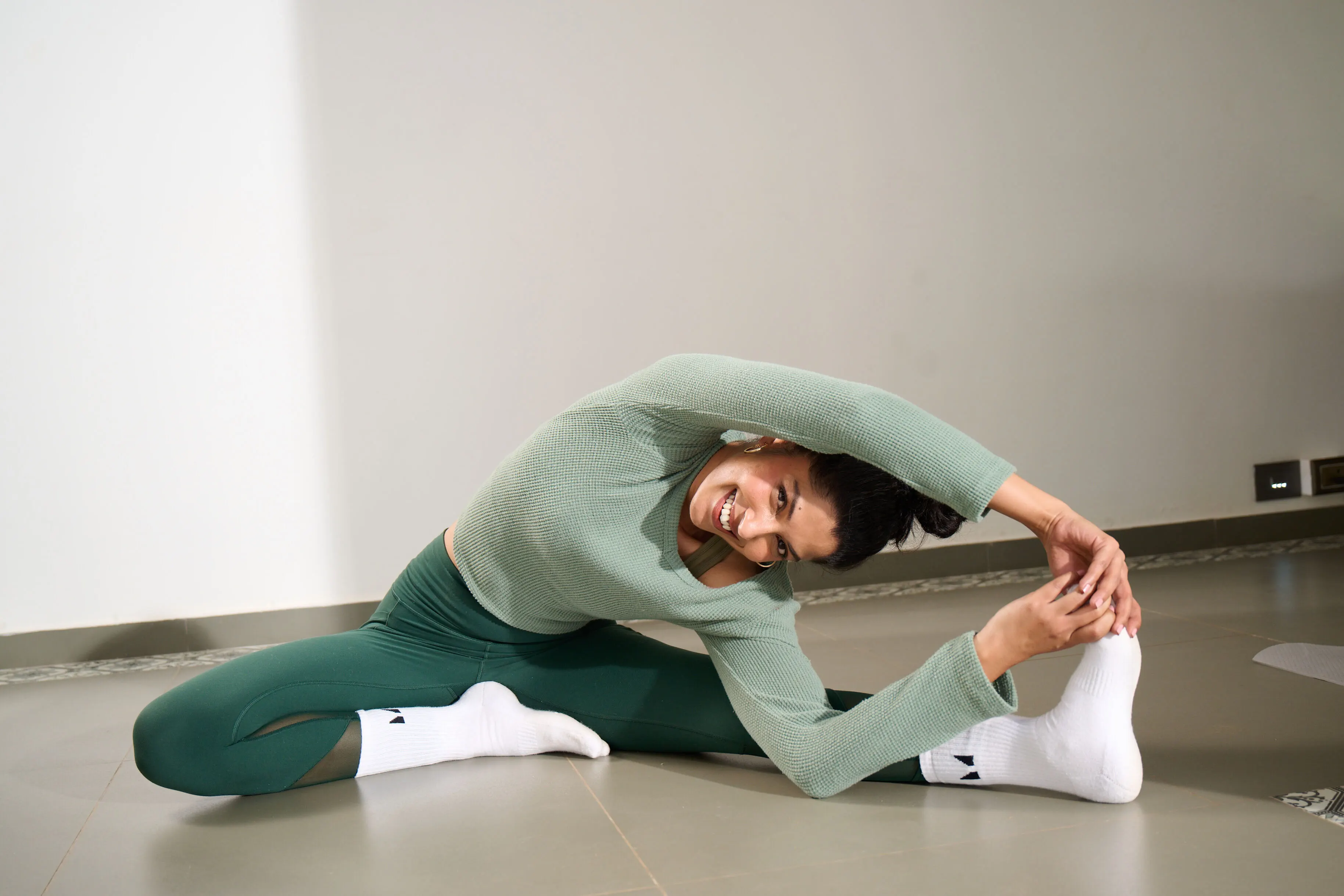










%201.png)

%201.svg)






%201.svg)